
Aluminium (Al), also spelled as aluminum (in American and Canadian English) is a chemical element of the periodic table, located in the group 13 and the period 3, and is having the atomic number 13. It is a lightweight, silvery-white post transition metal, whose name comes from the Latin word “alumen”, which means bitter salt. It is a member of the boron group and is the third most abundant element on earth.
On periodic table
| group | ⇨ | 1 | 2 | 3 | 4 | 5 | 6 | 7 | 8 | 9 | 10 | 11 | 12 | 13 | 14 | 15 | 16 | 17 | 18 |
| period | ⇩ | ||||||||||||||||||
| 1 | 1 H 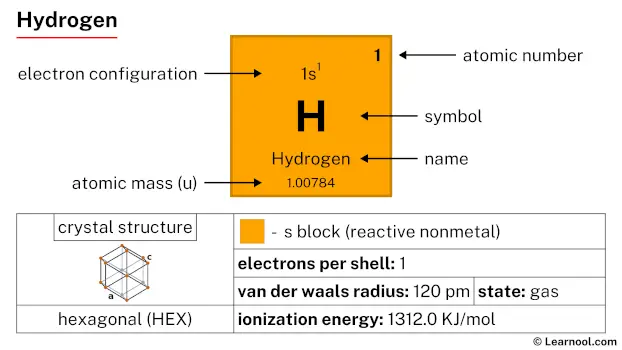 Hydrogen |
2 He  Helium |
|||||||||||||||||
| 2 | 3 Li  Lithium |
4 Be 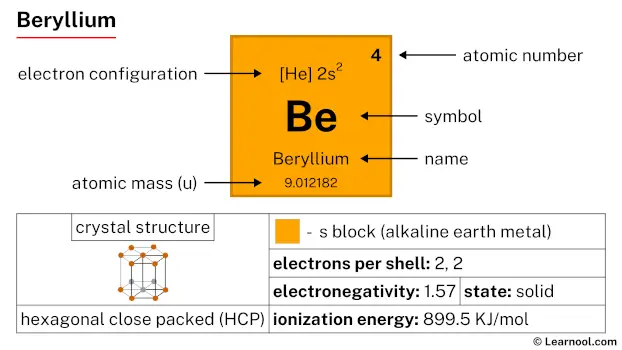 Beryllium |
5 B 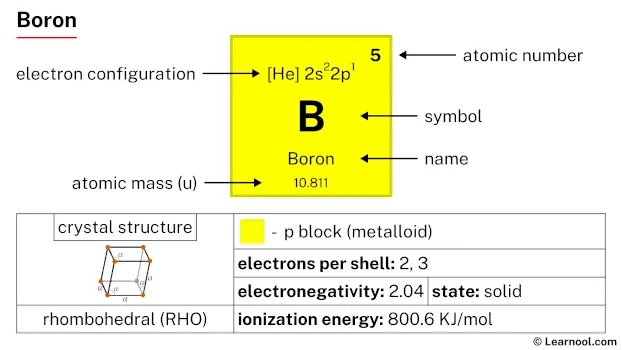 Boron |
6 C  Carbon |
7 N 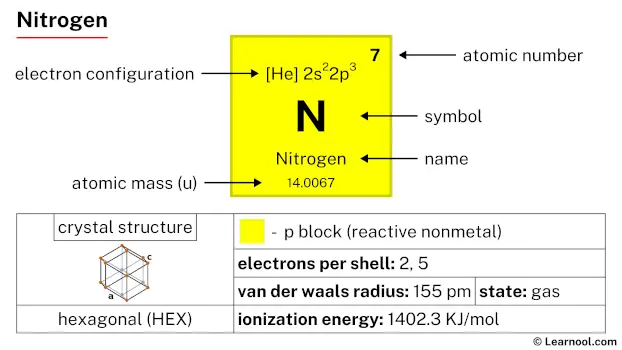 Nitrogen |
8 O 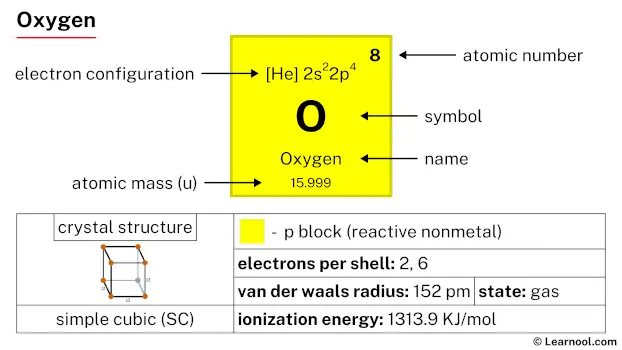 Oxygen |
9 F 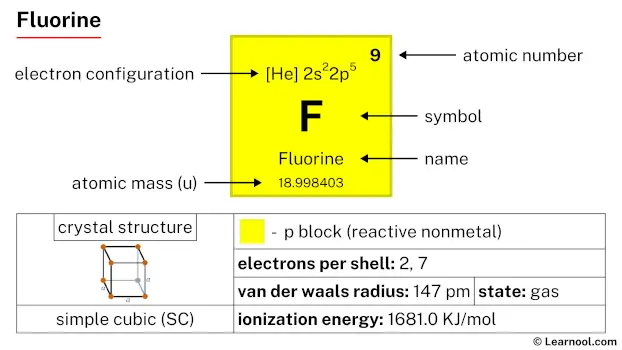 Fluorine |
10 Ne 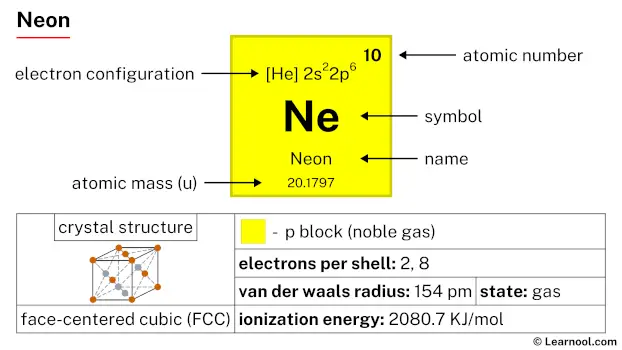 Neon |
|||||||||||
| 3 | 11 Na 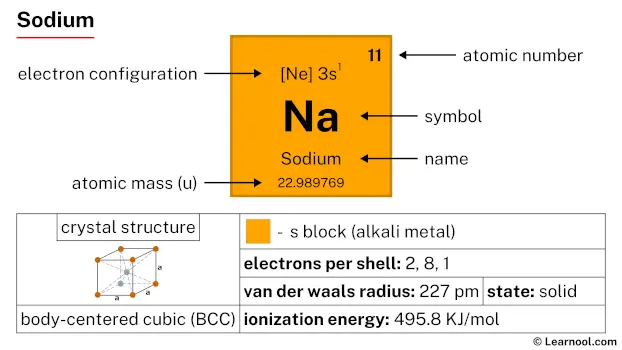 Sodium |
12 Mg 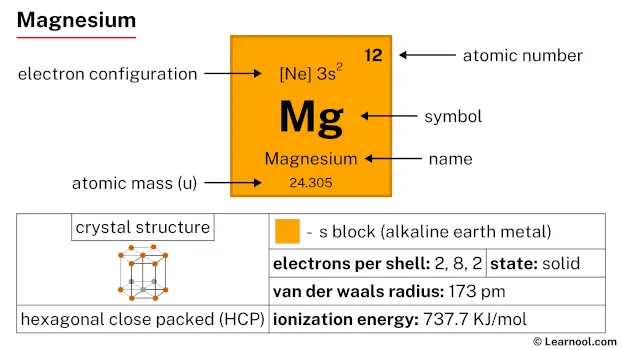 Magnesium |
13 Al Aluminium |
14 Si Silicon |
15 P 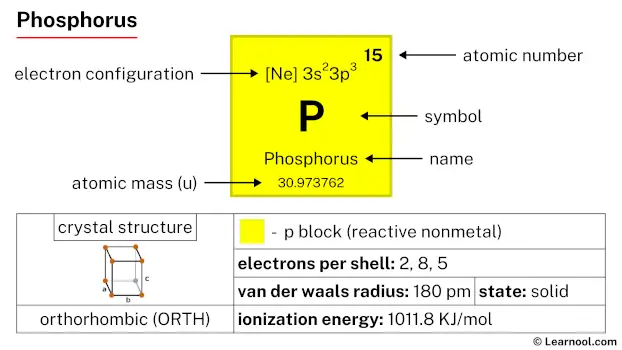 Phosphorus |
16 S 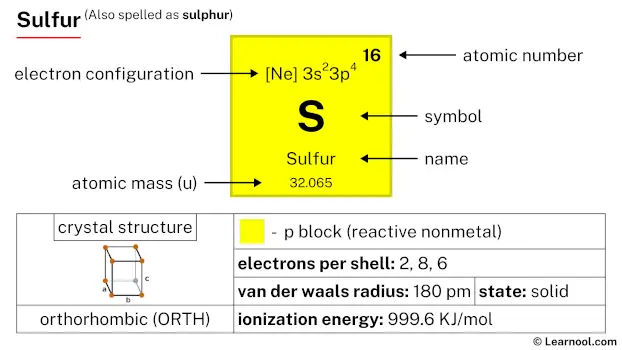 Sulfur |
17 Cl 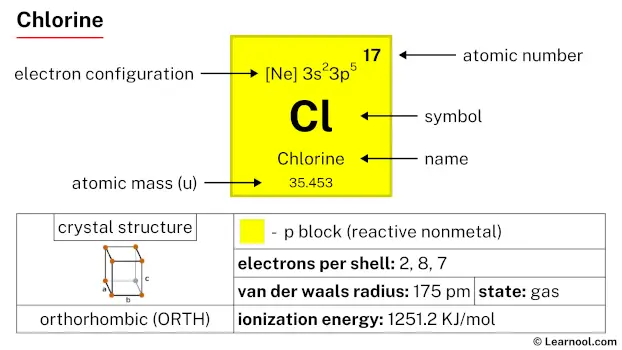 Chlorine |
18 Ar 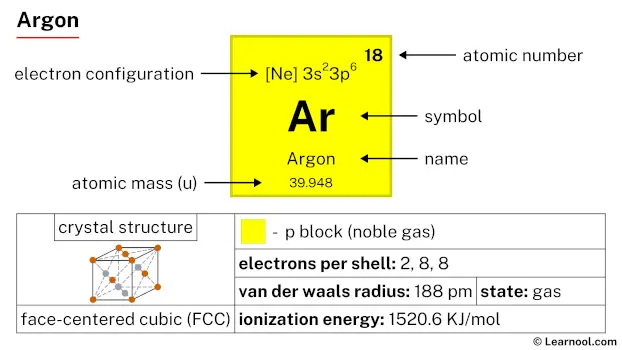 Argon |
|||||||||||
| 4 | 19 K 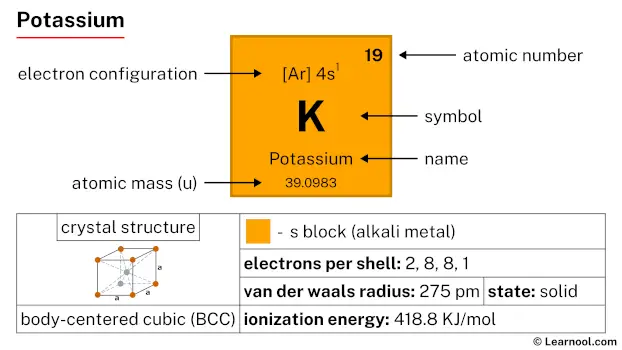 Potassium |
20 Ca 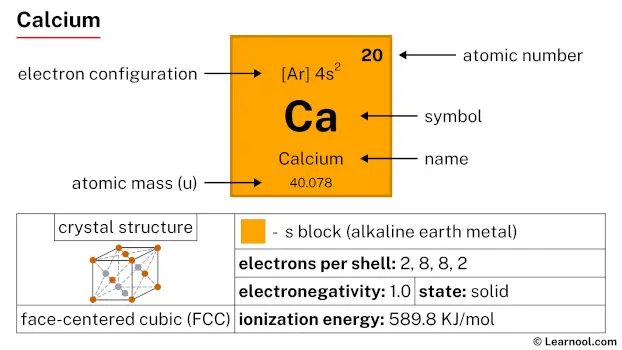 Calcium |
21 Sc 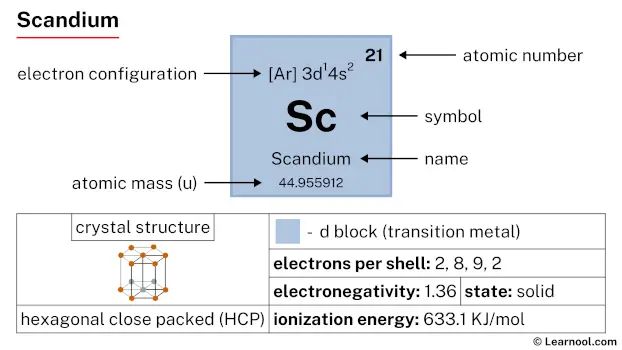 Scandium |
22 Ti 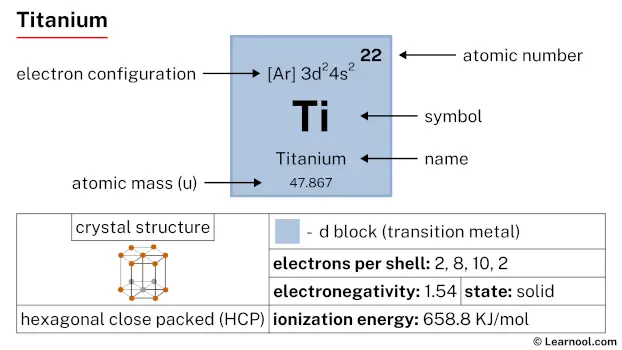 Titanium |
23 V 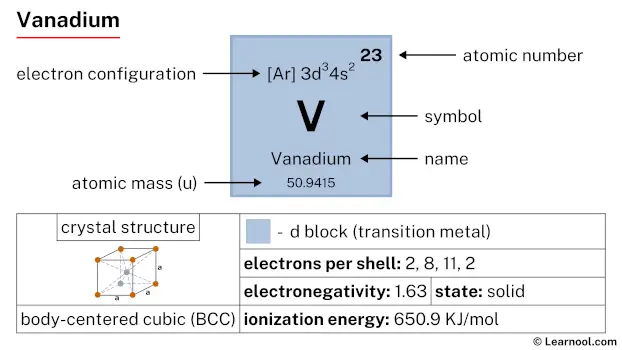 Vanadium |
24 Cr 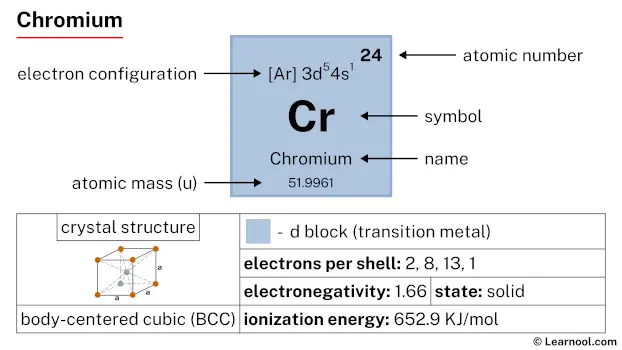 Chromium |
25 Mn 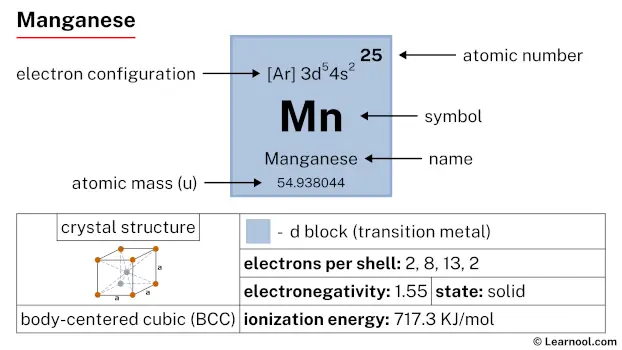 Manganese |
26 Fe 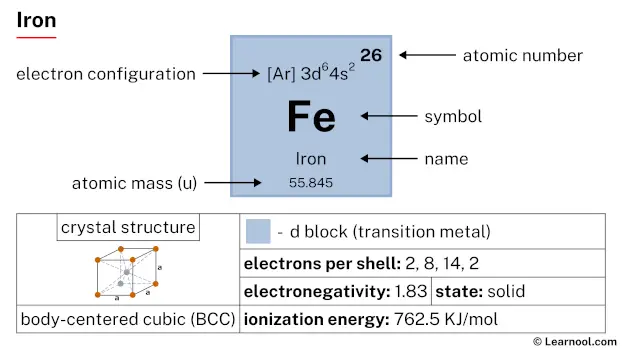 Iron |
27 Co 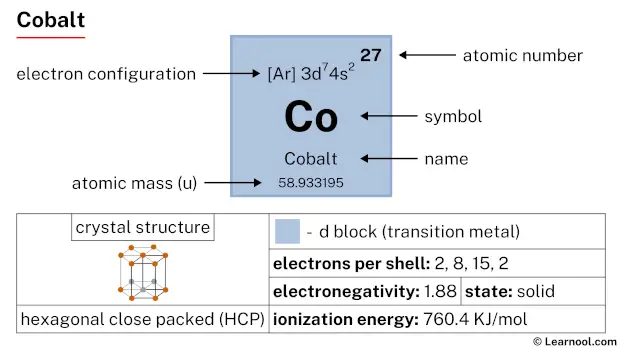 Cobalt |
28 Ni 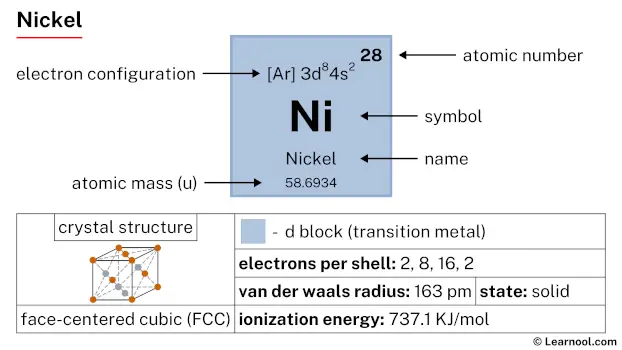 Nickel |
29 Cu 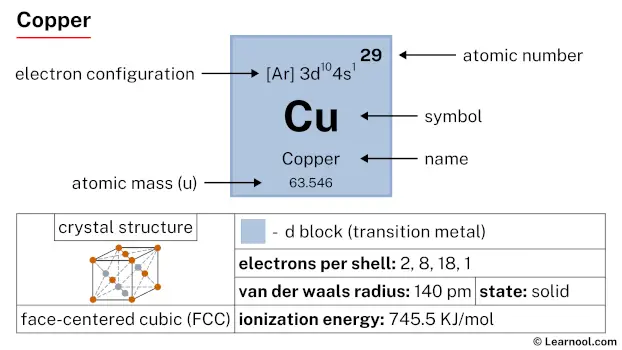 Copper |
30 Zn  Zinc |
31 Ga 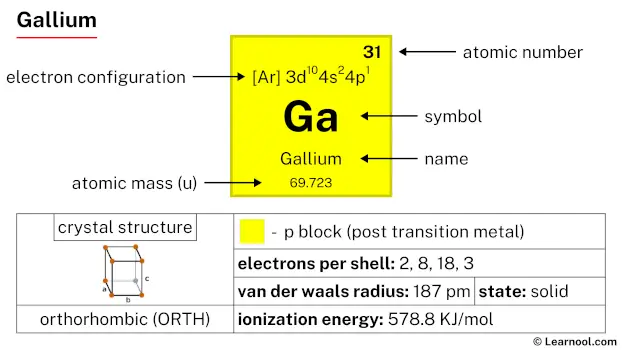 Gallium |
32 Ge 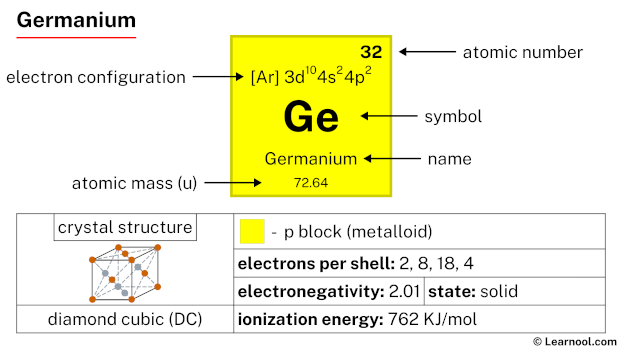 Germanium |
33 As 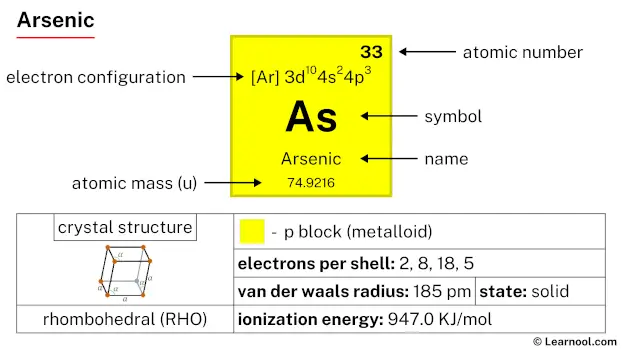 Arsenic |
34 Se 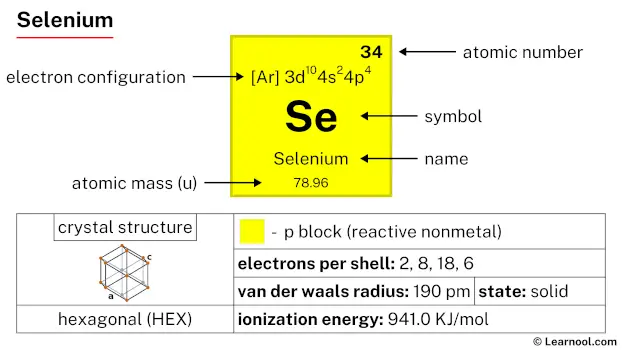 Selenium |
35 Br 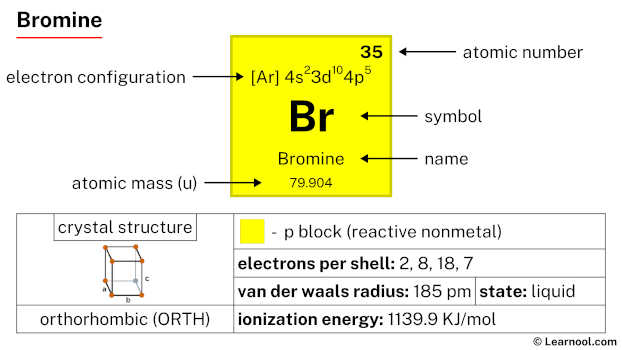 Bromine |
36 Kr  Krypton |
|
| 5 | 37 Rb 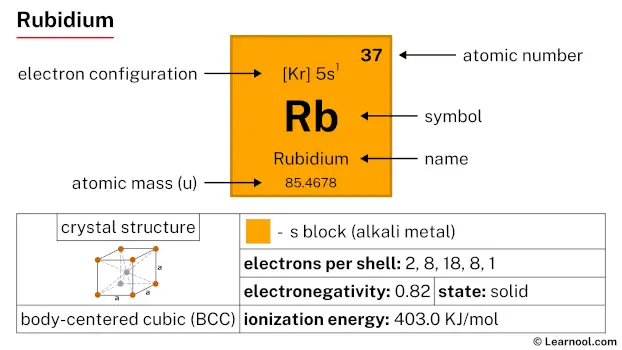 Rubidium |
38 Sr 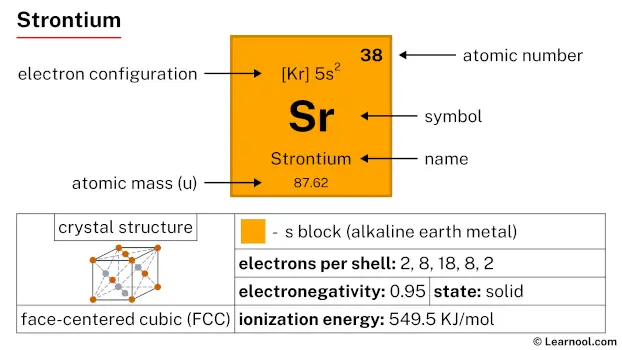 Strontium |
39 Y 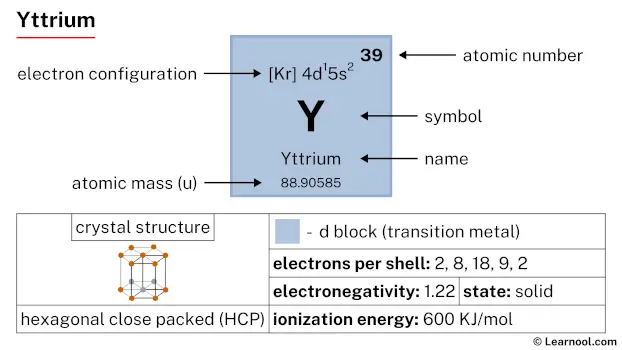 Yttrium |
40 Zr 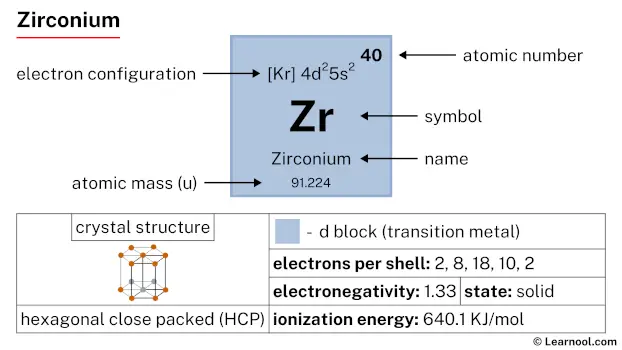 Zirconium |
41 Nb 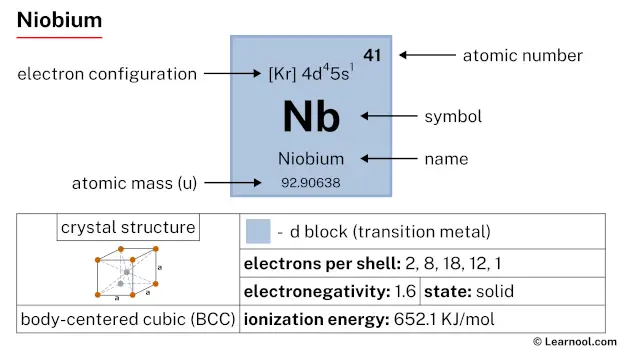 Niobium |
42 Mo 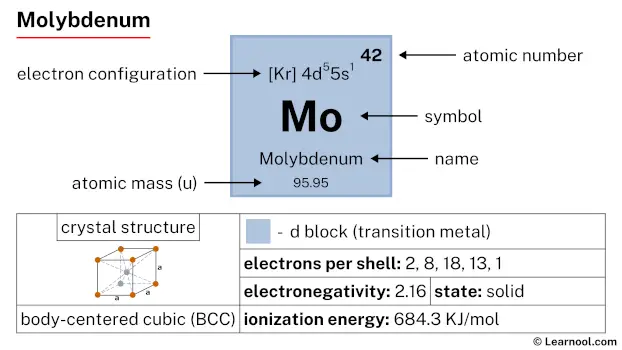 Molybdenum |
43 Tc 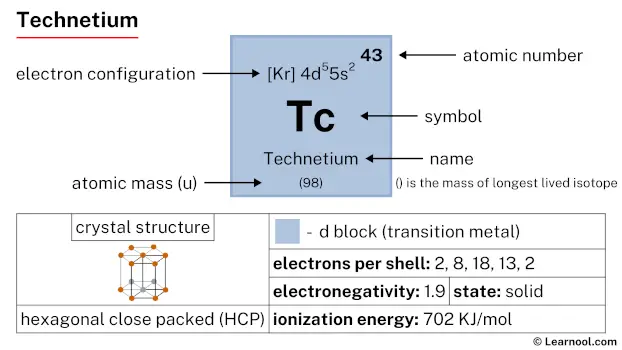 Technetium |
44 Ru 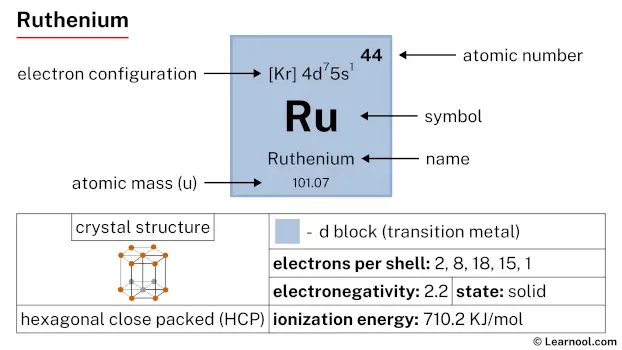 Ruthenium |
45 Rh 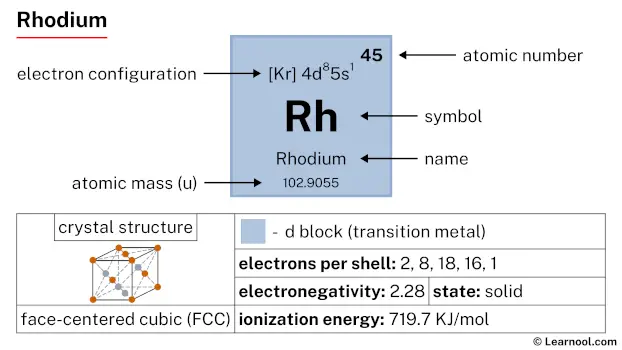 Rhodium |
46 Pd  Palladium |
47 Ag  Silver |
48 Cd 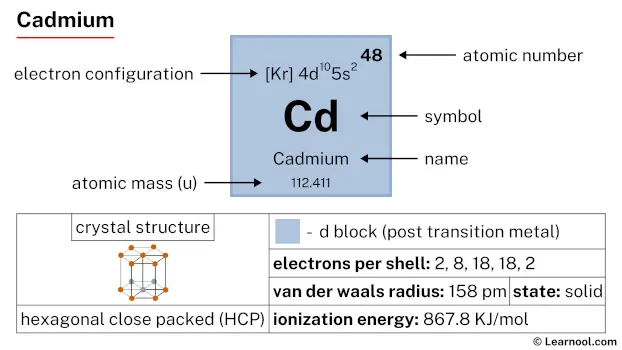 Cadmium |
49 In 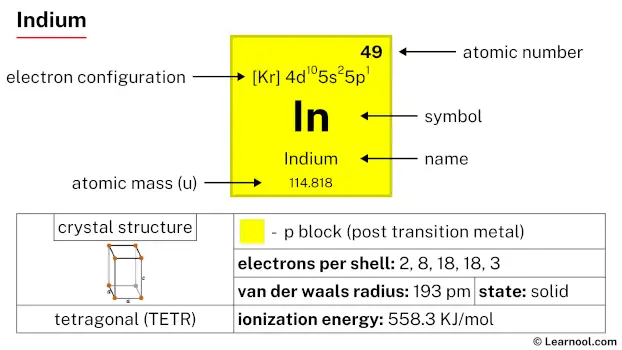 Indium |
50 Sn 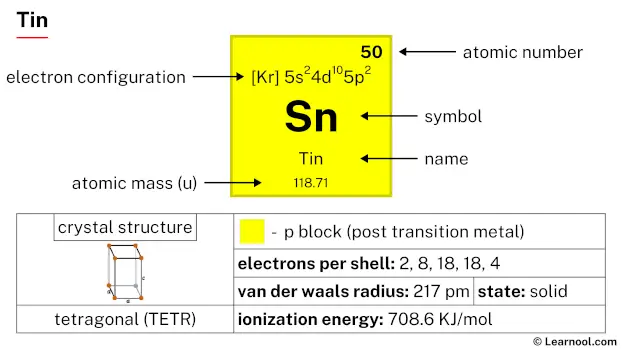 Tin |
51 Sb 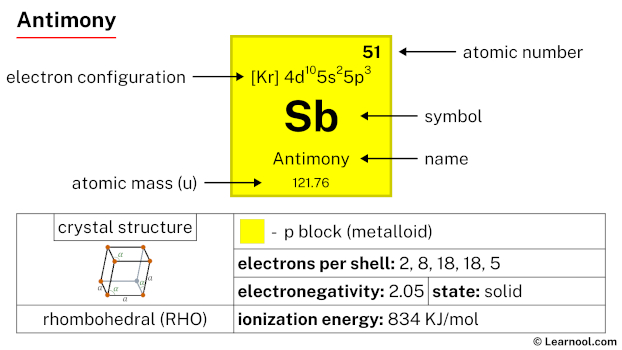 Antimony |
52 Te 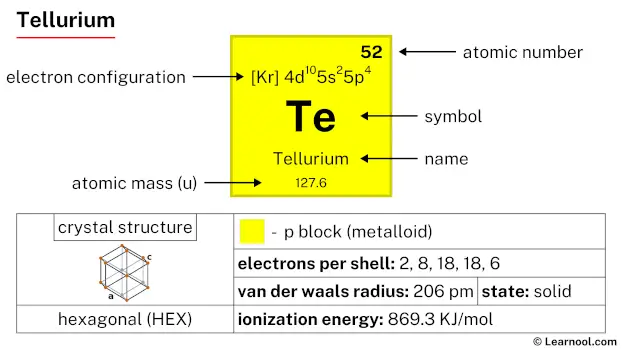 Tellurium |
53 I 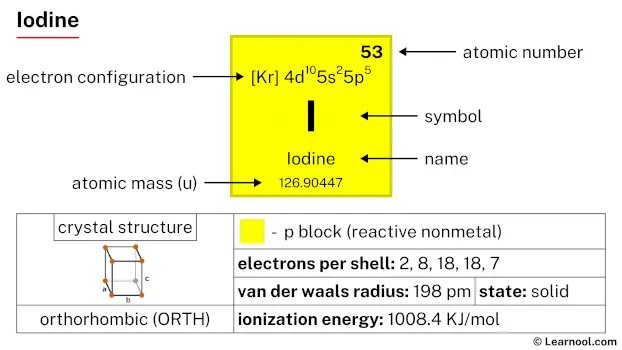 Iodine |
54 Xe 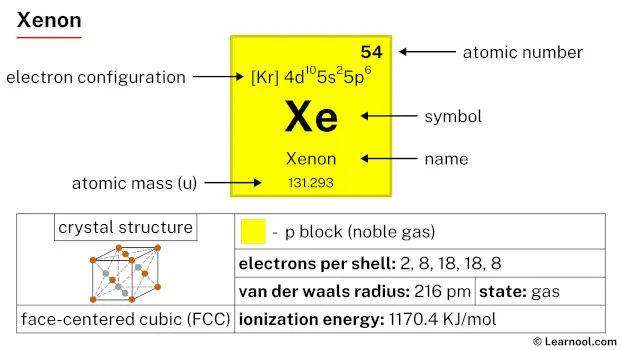 Xenon |
|
| 6 | 55 Cs 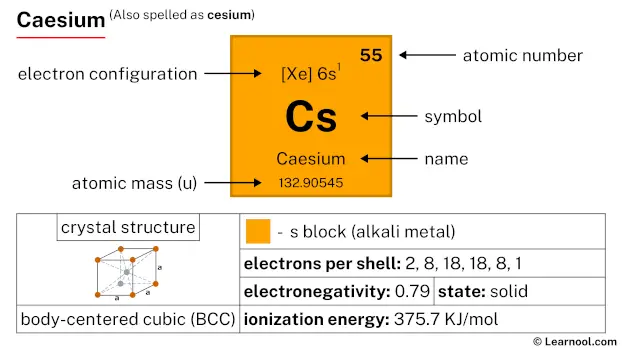 Caesium |
56 Ba 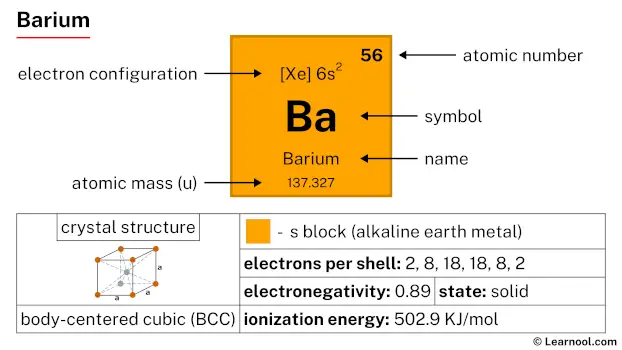 Barium |
72 Hf 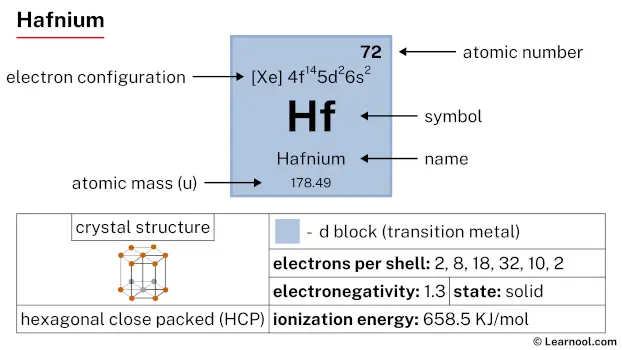 Hafnium |
73 Ta 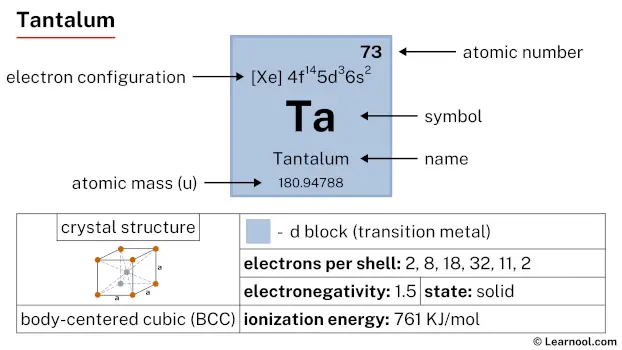 Tantalum |
74 W 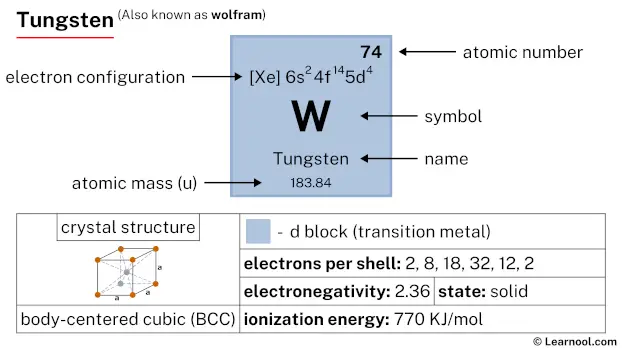 Tungsten |
75 Re 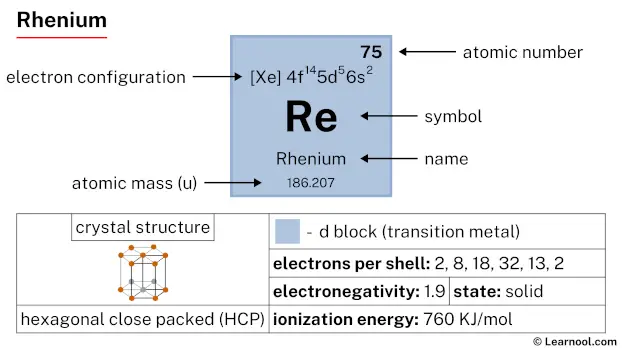 Rhenium |
76 Os 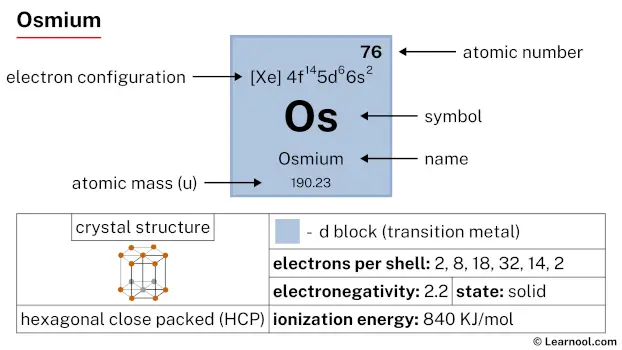 Osmium |
77 Ir 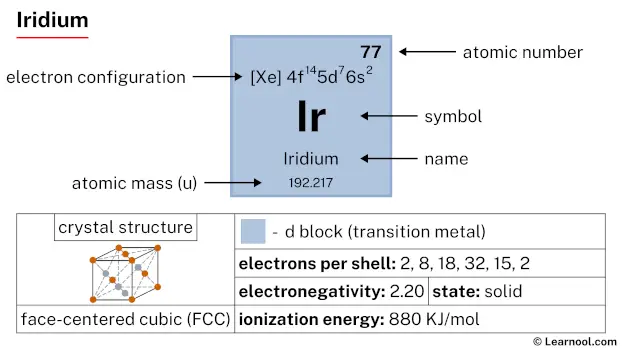 Iridium |
78 Pt  Platinum |
79 Au  Gold |
80 Hg 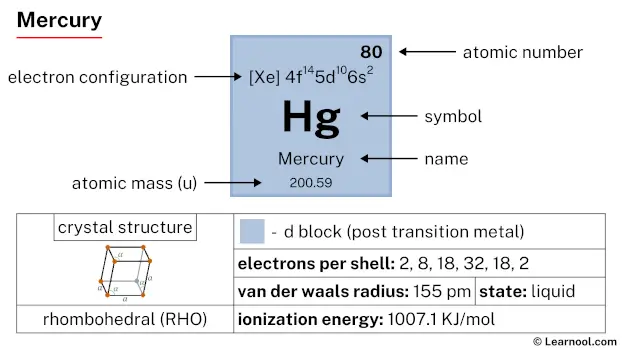 Mercury |
81 Tl 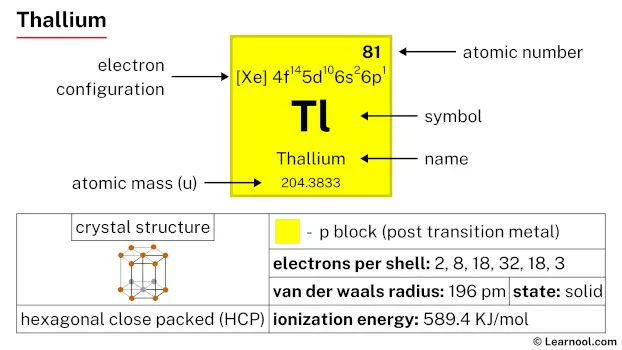 Thallium |
82 Pb  Lead |
83 Bi 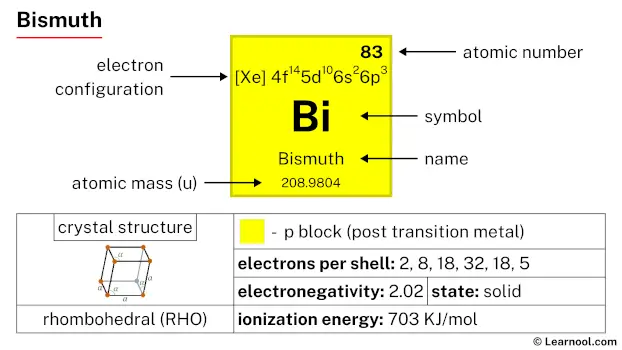 Bismuth |
84 Po 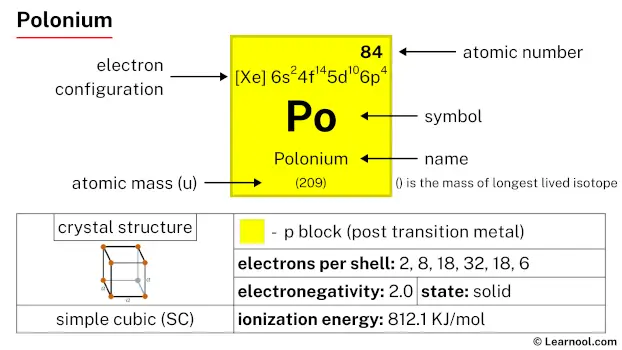 Polonium |
85 At 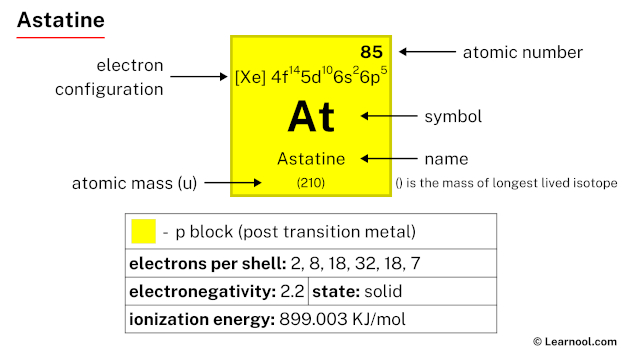 Astatine |
86 Rn 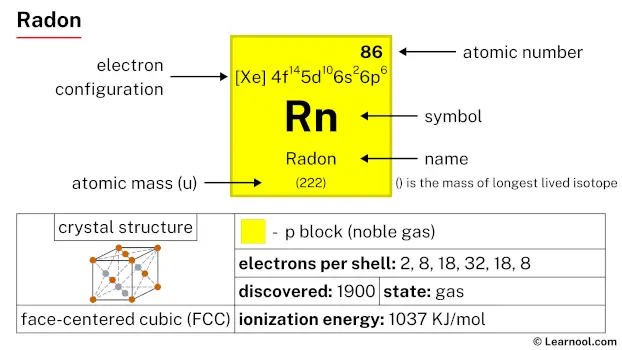 Radon |
||
| 7 | 87 Fr 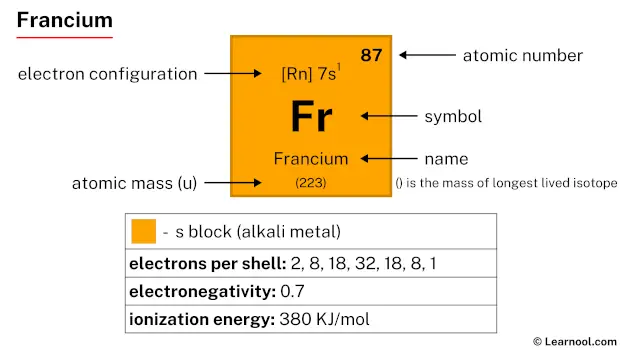 Francium |
88 Ra 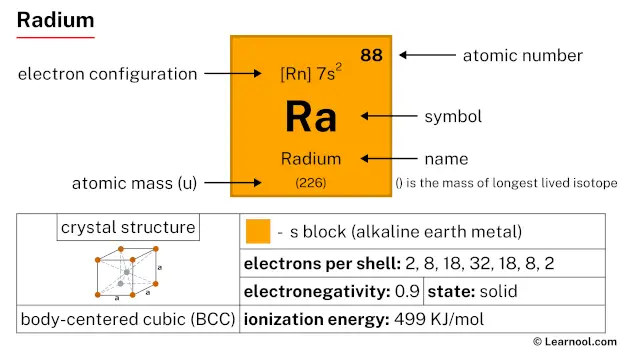 Radium |
104 Rf 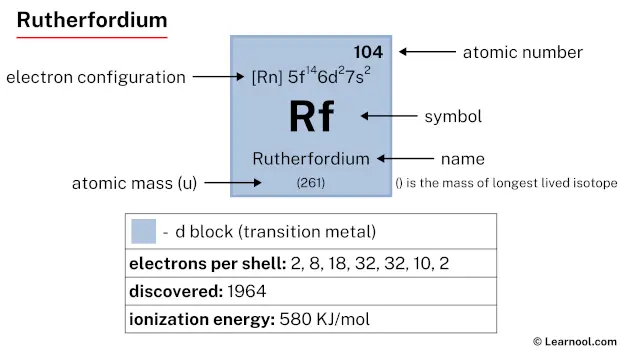 Rutherfordium |
105 Db 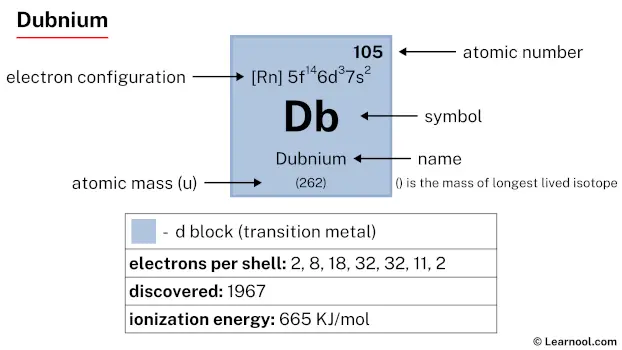 Dubnium |
106 Sg 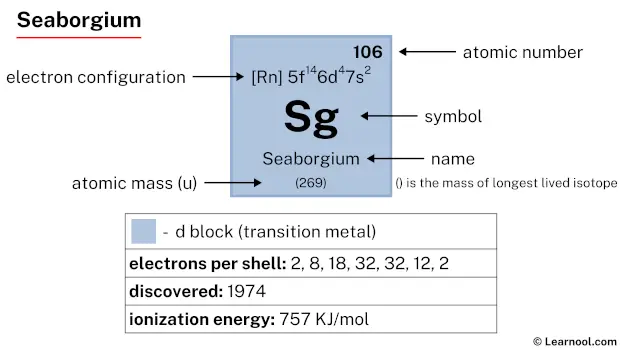 Seaborgium |
107 Bh 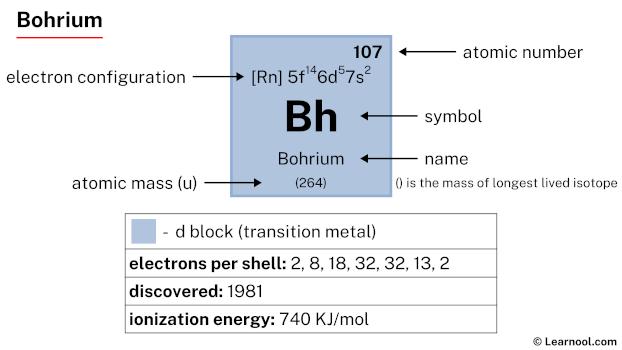 Bohrium |
108 Hs 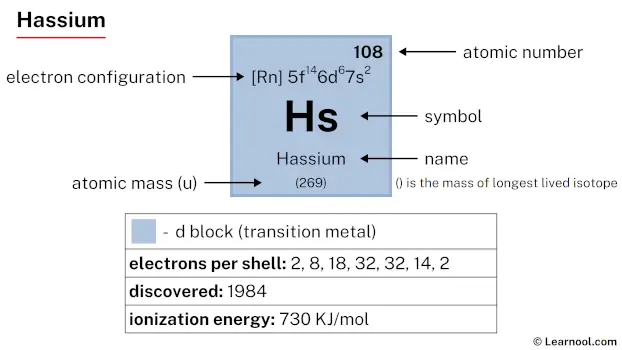 Hassium |
109 Mt 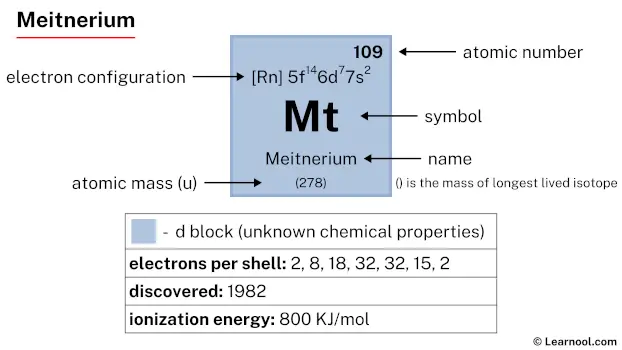 Meitnerium |
110 Ds 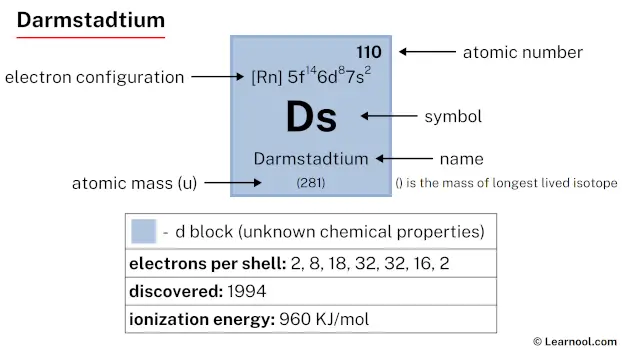 Darmstadtium |
111 Rg 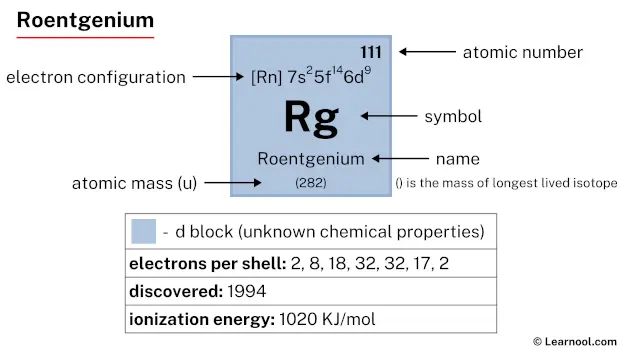 Roentgenium |
112 Cn  Copernicium |
113 Nh 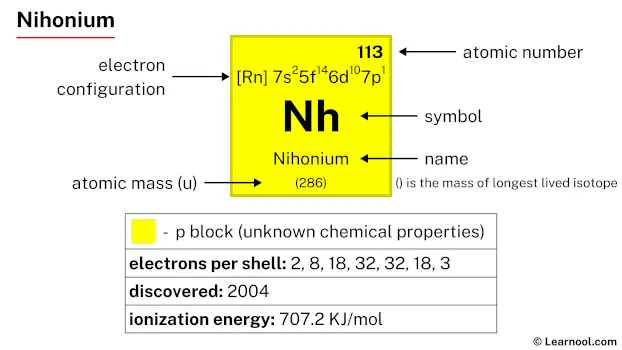 Nihonium |
114 Fl 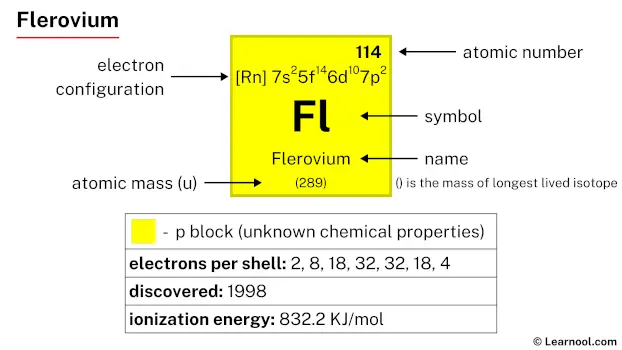 Flerovium |
115 Mc 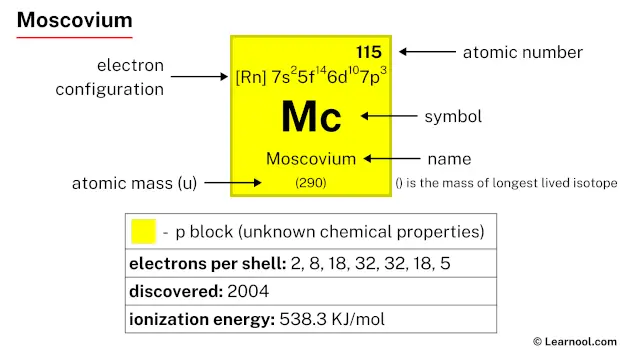 Moscovium |
116 Lv 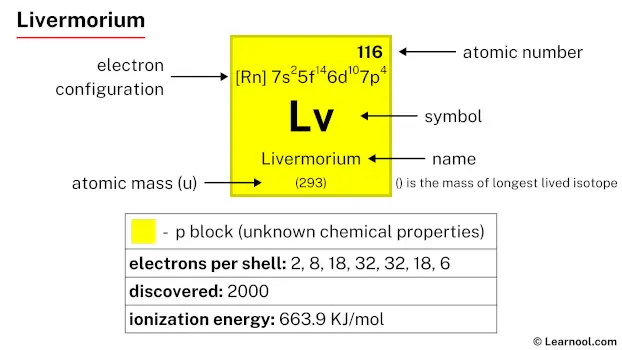 Livermorium |
117 Ts 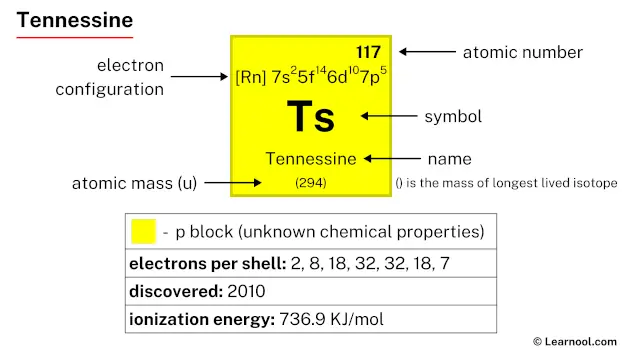 Tennessine |
118 Og 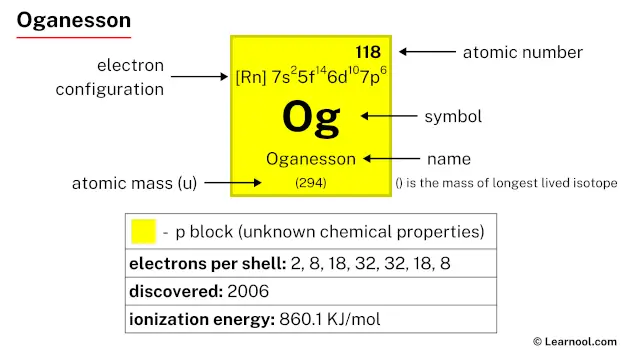 Oganesson |
||
| 57 La 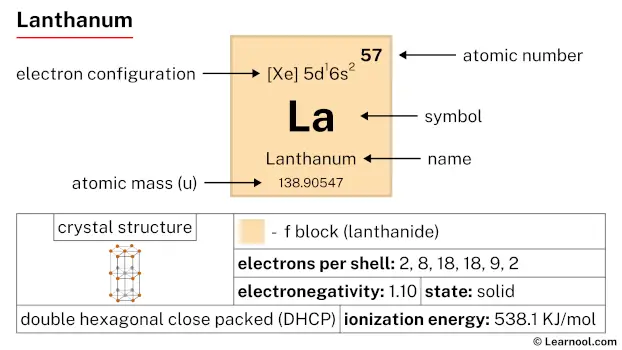 Lanthanum |
58 Ce 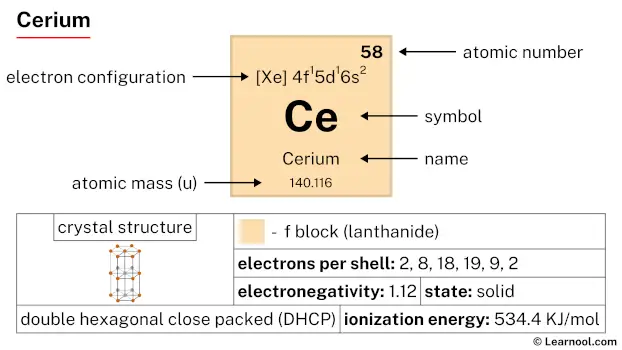 Cerium |
59 Pr 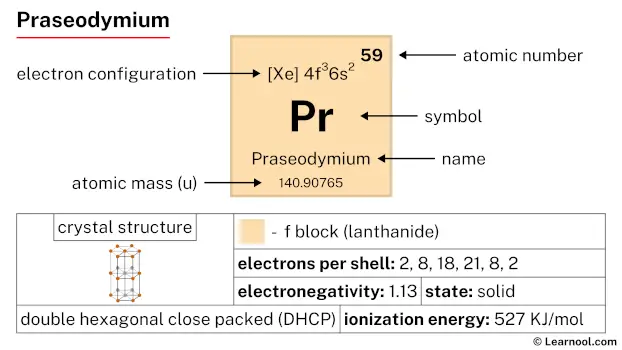 Praseodymium |
60 Nd 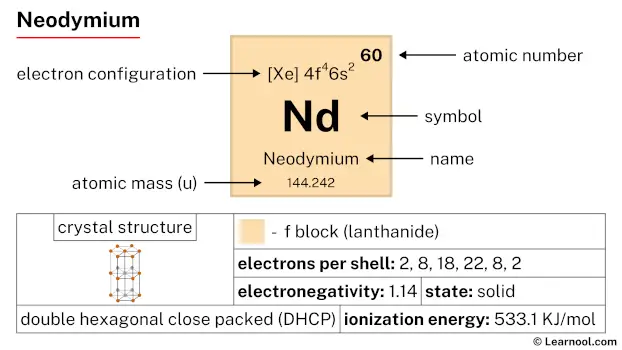 Neodymium |
61 Pm 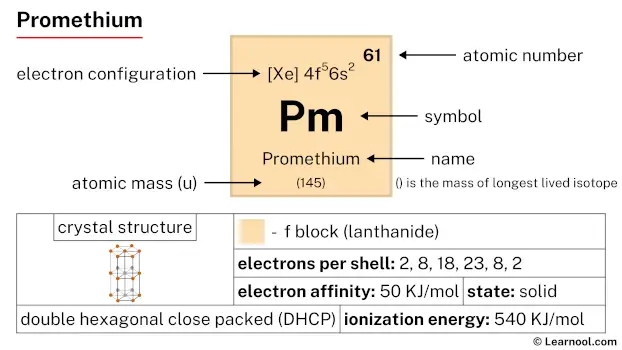 Promethium |
62 Sm 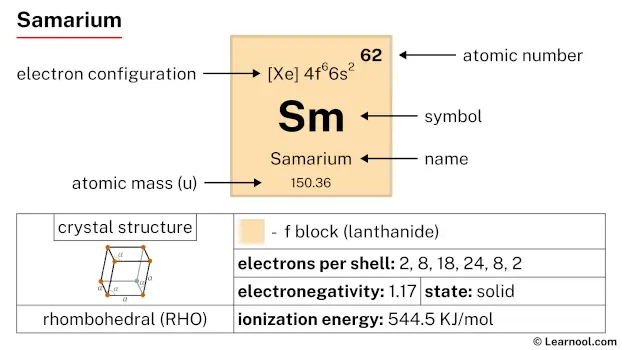 Samarium |
63 Eu 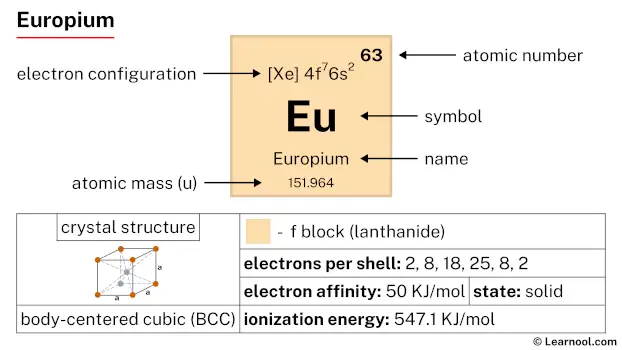 Europium |
64 Gd 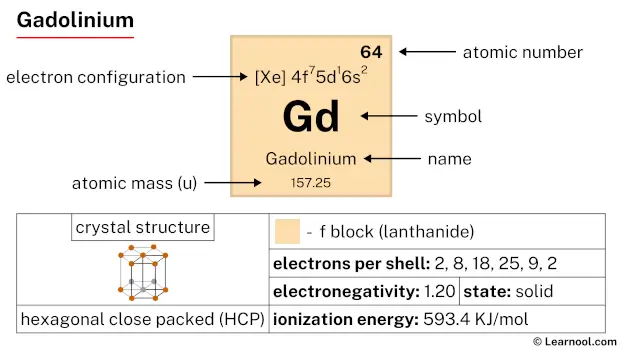 Gadolinium |
65 Tb 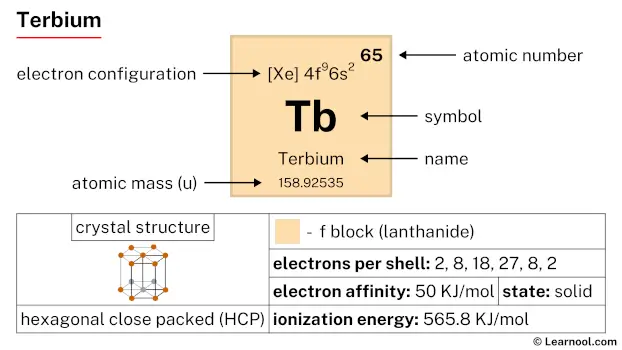 Terbium |
66 Dy 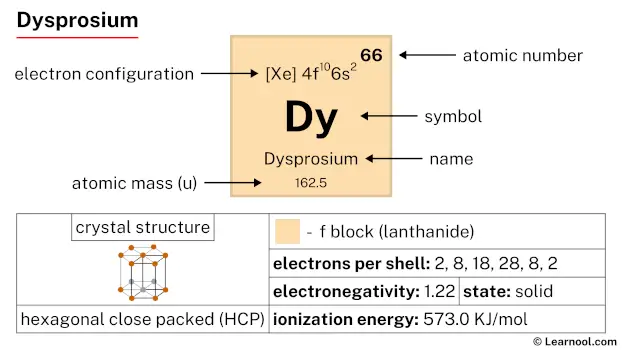 Dysprosium |
67 Ho 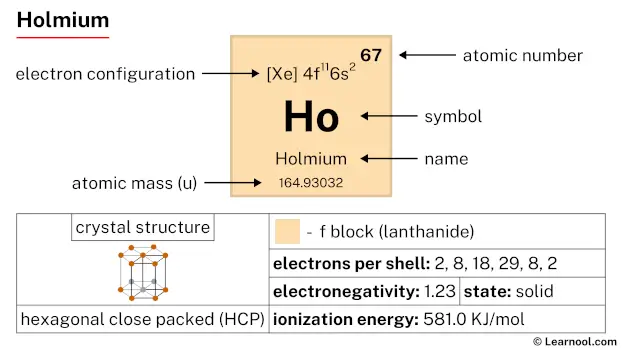 Holmium |
68 Er 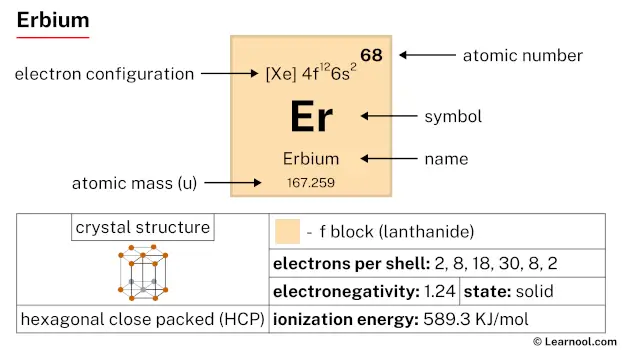 Erbium |
69 Tm 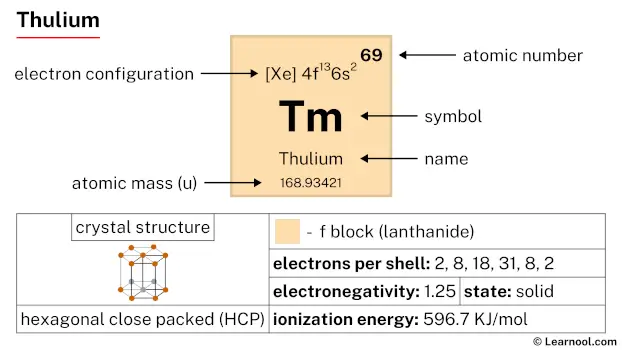 Thulium |
70 Yb 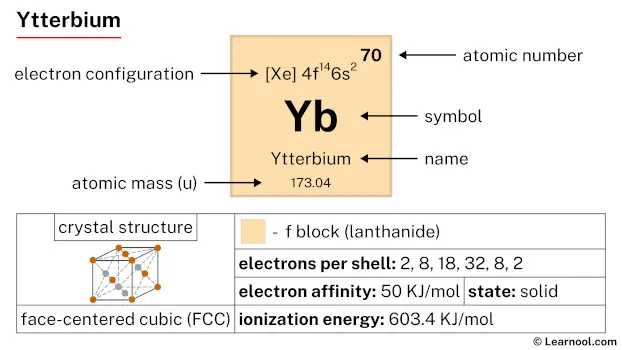 Ytterbium |
71 Lu 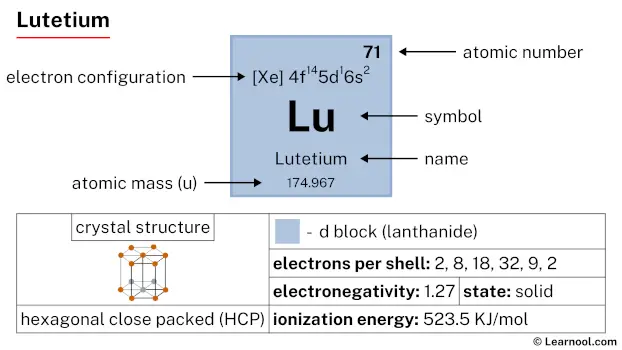 Lutetium |
|||||
| 89 Ac 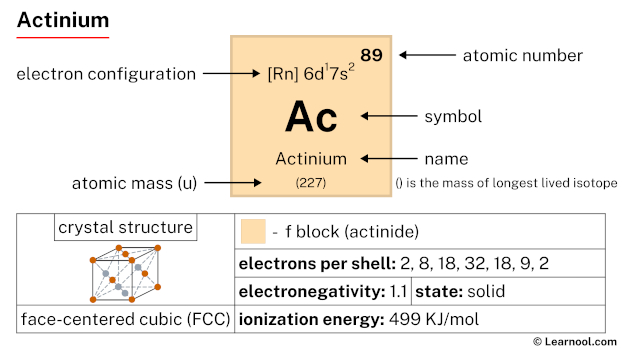 Actinium |
90 Th 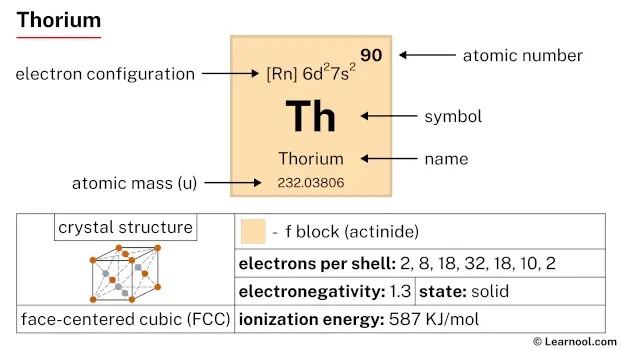 Thorium |
91 Pa 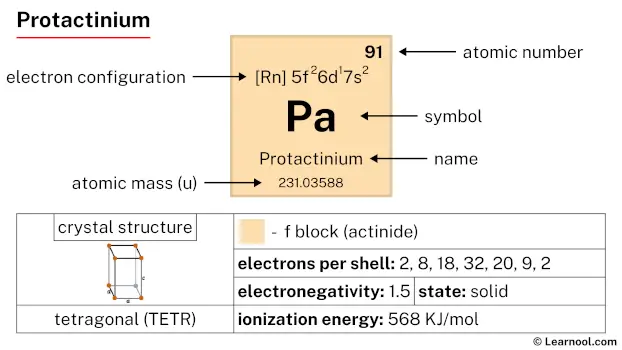 Protactinium |
92 U 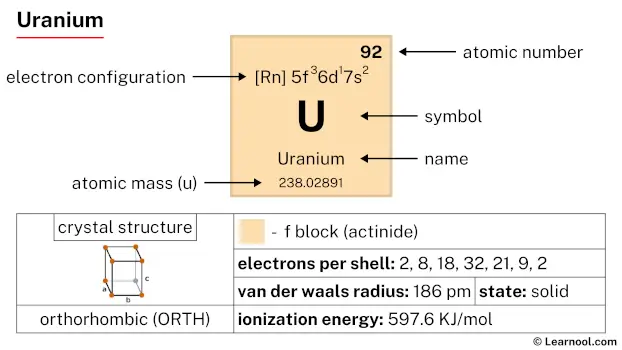 Uranium |
93 Np 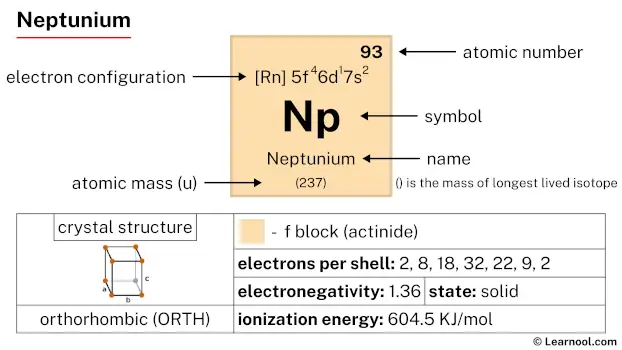 Neptunium |
94 Pu 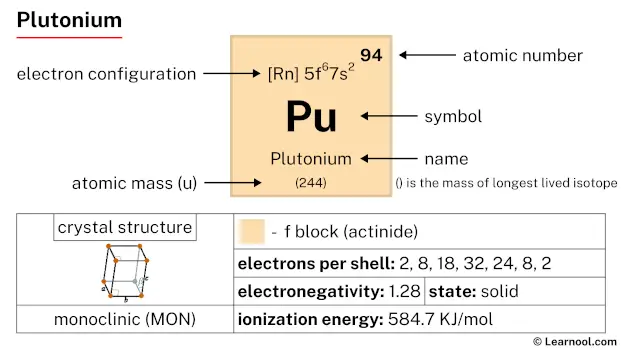 Plutonium |
95 Am  Americium |
96 Cm 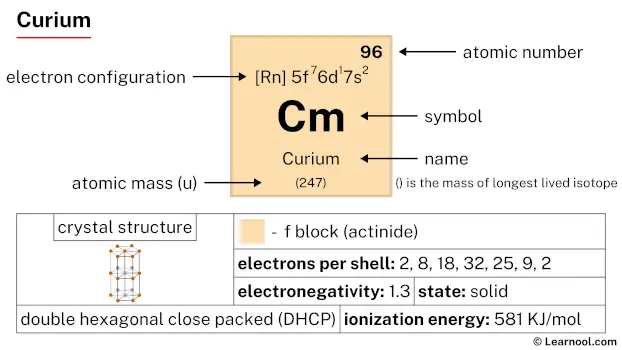 Curium |
97 Bk 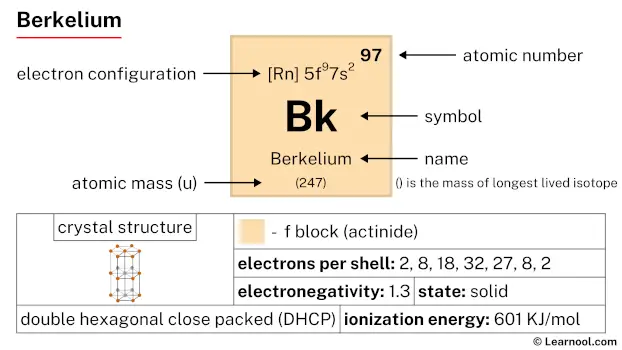 Berkelium |
98 Cf 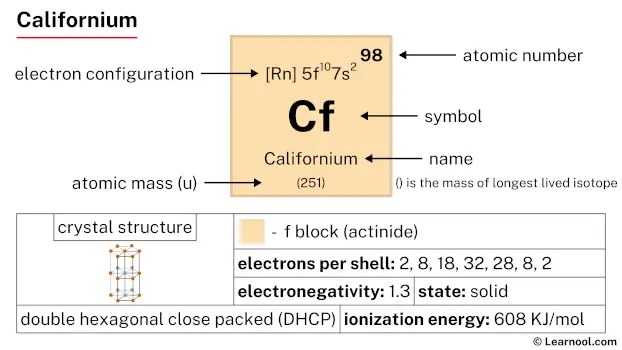 Californium |
99 Es 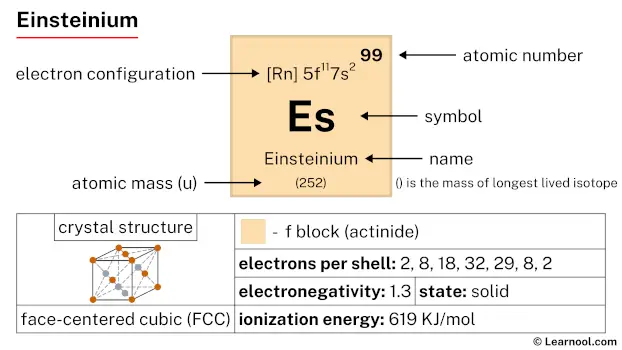 Einsteinium |
100 Fm 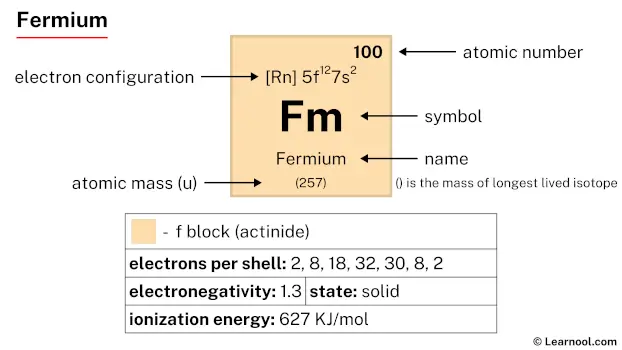 Fermium |
101 Md 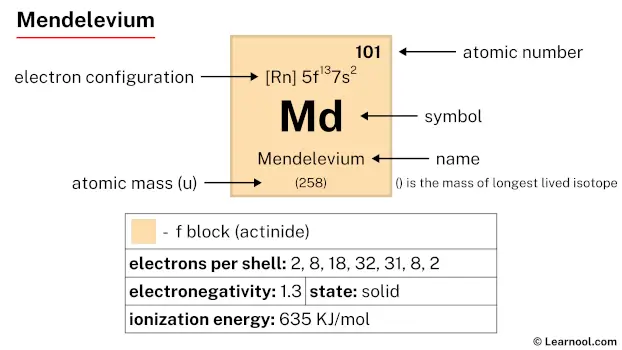 Mendelevium |
102 No 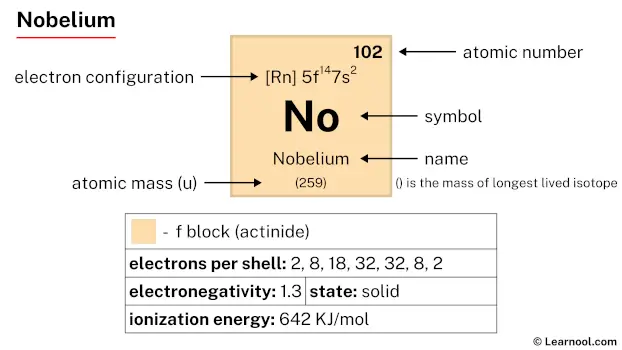 Nobelium |
103 Lr 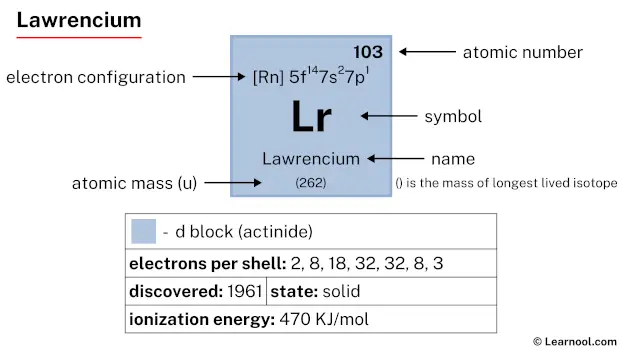 Lawrencium |
|||||
| – p block |
Aluminium is a p-block element, situated in the thirteenth column (boron group) of the periodic table, below boron (B). It has the atomic number 13 and is denoted by the symbol Al.
Element information
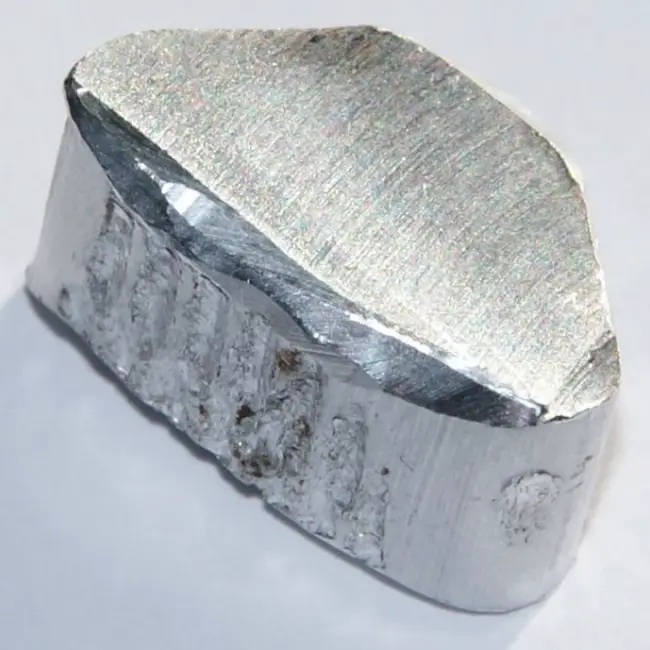 |
|
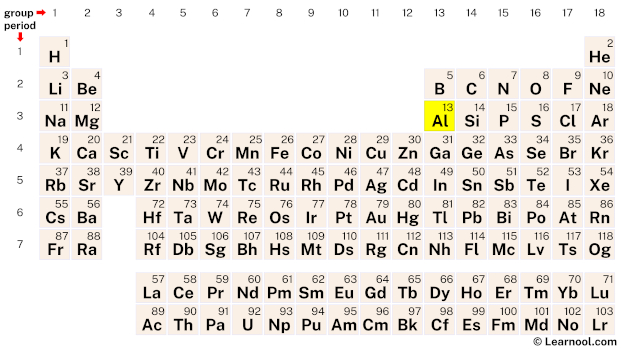 |
|
| Origin of name | Latin word “alumen” (which means bitter salt) |
| Symbol | Al |
| Atomic number (Z) | 13 |
| Atomic mass | 26.981539 u |
| Block | p-block |
| Group | 13 (boron group) |
| Period | 3 |
| Classification | Post-transition metal |
| Atomic radius | 143 pm |
| Covalent radius | 121±4 pm |
| Van der Waals radius | 184 pm |
| Melting point | 660.32 ℃, 4478 ℉, 933.47 K |
| Boiling point | 2470 ℃, 4478 ℉, 2743 K |
| Electron configuration | [Ne] 3s2 3p1 |
| Electrons per shell | 2, 8, 3 |
| Learn how to draw: Aluminium Bohr model | |
| Crystal structure | Face-centered cubic (fcc) |
| Phase at r.t | Solid |
| Density near r.t | 2.70 g/cm3 |
| Main isotopes | Aluminium-27 |
| Natural occurrence | Primordial |
| Oxidation state | +3 |
| Electronegativity (Pauling scale) | 1.61 |
| Protons Neutrons Electrons |
13 14 13 |
| Learn how to find: Aluminium protons neutrons electrons | |
| Valence electrons | 3 |
| Learn how to find: Aluminium valence electrons | |
| CAS number | 7429-90-5 |
| Discovered by | Hans Christian Ørsted in 1825 |
History
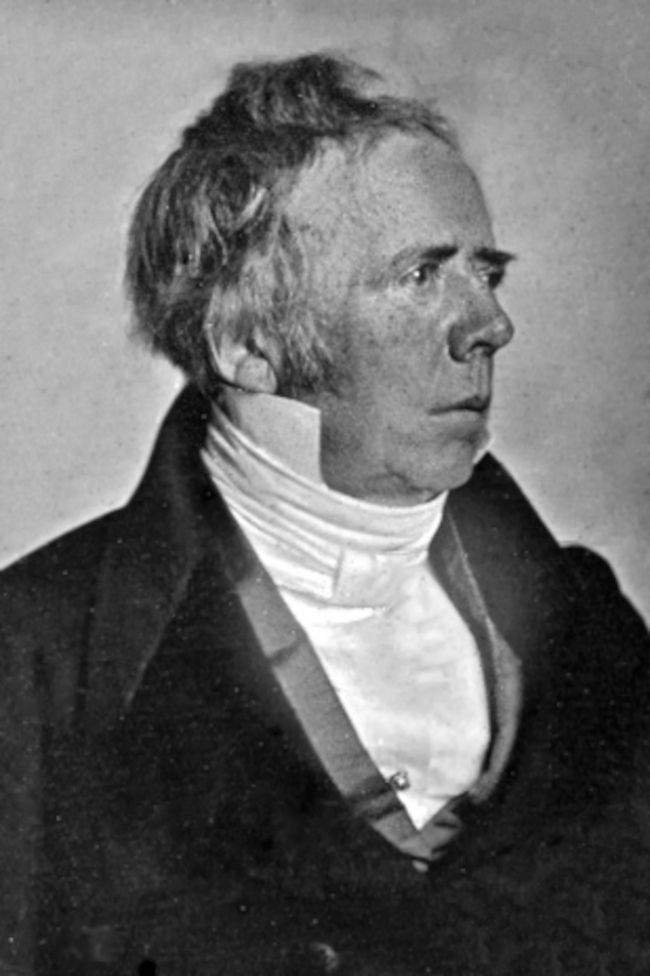
Aluminium has a rich and fascinating history that spans centuries. Danish scientist Hans Christian Ørsted was the first to produce small amounts of aluminium in 1825 by reacting aluminium chloride with potassium amalgam. However, it was not until the invention of the Hall-Héroult process in 1886 that aluminium became a commercially viable metal. This process involves the electrolysis of alumina (Al2O3) dissolved in cryolite (Na3AlF6) at high temperatures, resulting in the production of pure aluminium.
Aluminium quickly became a highly sought-after metal due to its unique properties, including its low density, high strength, and corrosion resistance. In the late 19th and early 20th centuries, aluminium was primarily used for decorative purposes, such as in jewelry and ornamental objects. However, as the production of aluminium increased, it began to be used in a wider range of applications.
During World War Ⅰ, aluminium became an essential material for the production of military aircraft and vehicles. Its lightweight and durable nature made it the ideal choice for constructing airplanes, and by the end of the war, aluminium had become a crucial component of many industries, including transportation, construction, and packaging.
Today, aluminium continues to be a highly valued metal due to its unique properties and versatility. It is used in a wide range of applications, including transportation (e.g. cars, trains, and planes), construction (e.g. building facades, window frames, and roofing), packaging (e.g. beverage cans and foil), and consumer goods (e.g. electronics and appliances).
Occurrence and production
Aluminium is the third most abundant element in the Earth’s crust after oxygen and silicon. It is never found in its pure form in nature, but always in combination with other elements. The most common aluminium-containing minerals are bauxite, cryolite, and feldspar.
Bauxite, which is a rock consisting mainly of aluminium hydroxide minerals, is the primary source of aluminium. Bauxite deposits are found in many countries around the world, including Australia, Guinea, Jamaica, Russia, and the United States. Other aluminium-containing minerals, such as feldspar, are also used as sources of aluminium.
The production of aluminium involves two main stages: the extraction of alumina (aluminium oxide) from bauxite and the electrolytic reduction of alumina to produce aluminium metal. The Bayer process is the most common method used to extract alumina from bauxite. In this process, crushed bauxite is mixed with caustic soda and heated under pressure to dissolve the alumina. The resulting solution is then cooled and filtered to remove any impurities, leaving behind pure alumina.
The Hall-Héroult process is the primary method used to produce aluminium metal. In this process, alumina is dissolved in a molten salt, typically a mixture of cryolite and fluorspar, and electrolyzed to produce aluminium metal at the cathode and oxygen gas at the anode. The process requires a significant amount of electricity, and as a result, aluminium production is often concentrated in areas with low electricity costs, such as hydroelectric power plants.
Properties
Aluminium is a relatively lightweight metal with a density of 2.70 grams per cubic centimeter, which is about one-third the density of steel.
Aluminium has a relatively low melting point of 660.32 degrees Celsius and a boiling point of 2470 degrees Celsius.
Aluminium is a good conductor of heat and electricity, although it is not as good as copper or silver.
Aluminium has a high resistance to corrosion, thanks to a thin layer of oxide that forms on its surface when it is exposed to air.
Aluminium is a highly ductile metal, meaning that it can be easily formed into various shapes and forms without cracking or breaking.
Aluminium is a highly reflective metal, reflecting up to 90% of visible light.
While aluminium is not as strong as some other metals, such as steel, it can be alloyed with other metals to increase its strength.
Aluminium is highly recyclable, and recycling aluminium requires only a fraction of the energy needed to produce new aluminium from bauxite.
Applications
Transportation
Aluminium is commonly used in the transportation industry for its combination of strength and lightweight. It is used in the construction of automobiles, airplanes, boats, and trains.
In automobiles, aluminium is used for parts such as engine blocks, wheels, and body panels. In airplanes, it is used for wings, fuselages, and other structural components.
Packaging
Aluminium is widely used in packaging due to its lightweight, durability, and resistance to corrosion. Aluminium cans are commonly used for beverages, and aluminium foil is used for food packaging and wrapping.
Construction
Aluminium is used in the construction industry for its strength, durability, and resistance to corrosion. It is used in the construction of buildings, bridges, and other structures. In building construction, aluminium is commonly used for window frames, roofing, and siding.
Electrical and electronic applications
Aluminium is a good conductor of electricity, and it is used in a wide range of electrical and electronic applications. It is used in power transmission lines, electronic components, and wiring.
Machinery and equipment
Aluminium is used in the construction of machinery and equipment due to its strength, durability, and resistance to corrosion. It is used in a wide range of applications, from machine parts to industrial equipment.
Sports equipment
Aluminium is commonly used in sports equipment due to its lightweight and strength. It is used in applications such as baseball bats, golf clubs, and bicycle frames.
Household items
Aluminium is used in a wide range of household items due to its lightweight, durability, and resistance to corrosion. It is used in items such as cookware, utensils, and furniture.
Interesting facts
Aluminium is the third most abundant element in the Earth’s crust, after oxygen and silicon. It makes up about 8% of the Earth’s crust by weight.
Aluminium was once more valuable than gold. In the 19th century, aluminium was a rare and expensive metal, used primarily for jewelry and other decorative items. It was not until the invention of the Hall-Héroult process in 1886 that the production of aluminium became more efficient and cost-effective.
Aluminium is a very reactive metal, but it forms a protective oxide layer on its surface when exposed to air. This oxide layer protects the metal from further corrosion and gives it a characteristic shiny appearance.
The aluminium used in beverage cans is extremely thin. A typical aluminium can is only about 0.09 millimeters thick, but it can support the weight of a person standing on it.
Aluminium is a good conductor of electricity, and it is used in a wide range of electrical applications, from power transmission lines to electronic components.
The Statue of Liberty is made of copper with an aluminium coating. The copper provides the structure of the statue, while the aluminium coating gives it its distinctive green color.
Aluminium is a popular material for spacecraft construction due to its lightweight and strength. The Apollo spacecraft that landed on the moon were made primarily of aluminium.
Aluminium is not magnetic, which makes it useful in applications where magnetism could interfere with the operation of equipment, such as in MRI machines.
Aluminium is a versatile metal that can be alloyed with other metals to enhance its properties. For example, aluminium can be alloyed with copper to create a strong, lightweight material used in aircraft construction.
Related
More elements
External links
- https://www.rsc.org/periodic-table/element/13/aluminium
- https://en.wikipedia.org/wiki/Aluminium
- https://www.britannica.com/science/aluminum
- https://pubchem.ncbi.nlm.nih.gov/element/Aluminum
- https://education.jlab.org/itselemental/ele013.html
- https://www.chemicool.com/elements/aluminum.html
- https://www.ducksters.com/science/chemistry/aluminum.php
- https://www.radiochemistry.org/periodictable/elements/13.html
Deep
Learnool.com was founded by Deep Rana, who is a mechanical engineer by profession and a blogger by passion. He has a good conceptual knowledge on different educational topics and he provides the same on this website. He loves to learn something new everyday and believes that the best utilization of free time is developing a new skill.
